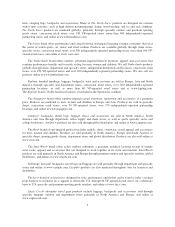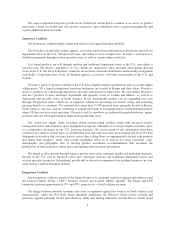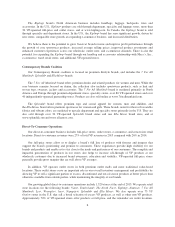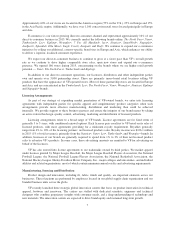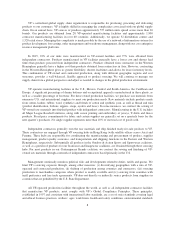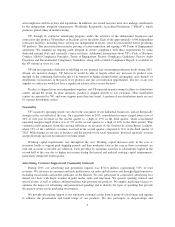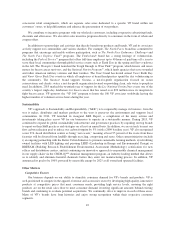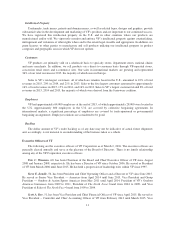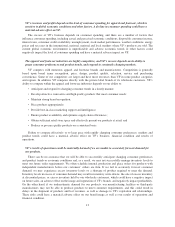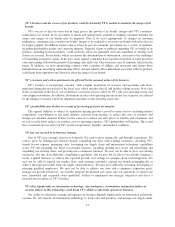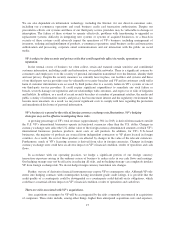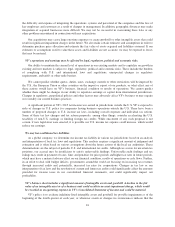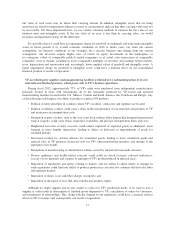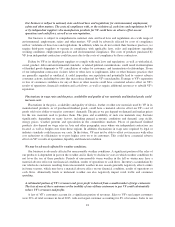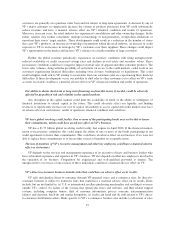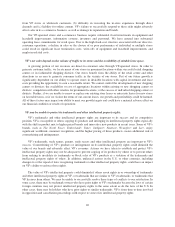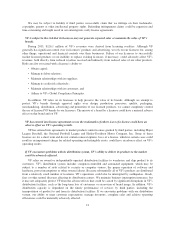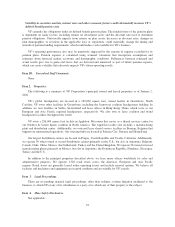North Face 2015 Annual Report Download - page 27
Download and view the complete annual report
Please find page 27 of the 2015 North Face annual report below. You can navigate through the pages in the report by either clicking on the pages listed below, or by using the keyword search tool below to find specific information within the annual report.VF’s revenues and profits depend on the level of consumer spending for apparel and footwear, which is
sensitive to global economic conditions and other factors. A decline in consumer spending could have a
material adverse effect on VF.
The success of VF’s business depends on consumer spending, and there are a number of factors that
influence consumer spending, including actual and perceived economic conditions, disposable consumer income,
interest rates, consumer credit availability, unemployment, stock market performance, weather conditions, energy
prices and tax rates in the international, national, regional and local markets where VF’s products are sold. The
current global economic environment is unpredictable and adverse economic trends or other factors could
negatively impact the level of consumer spending and have a material adverse impact on VF.
The apparel and footwear industries are highly competitive, and VF’s success depends on its ability to
gauge consumer preferences and product trends, and respond to constantly changing markets.
VF competes with numerous apparel and footwear brands and manufacturers. Competition is generally
based upon brand name recognition, price, design, product quality, selection, service and purchasing
convenience. Some of our competitors are larger and have more resources than VF in some product categories
and regions. In addition, VF competes directly with the private label brands of its wholesale customers. VF’s
ability to compete within the apparel and footwear industries depends on our ability to:
• Anticipate and respond to changing consumer trends in a timely manner;
• Develop attractive, innovative and high quality products that meet consumer needs;
• Maintain strong brand recognition;
• Price products appropriately;
• Provide best-in-class marketing support and intelligence;
• Ensure product availability and optimize supply chain efficiencies;
• Obtain sufficient retail store space and effectively present our products at retail; and
• Produce or procure quality products on a consistent basis.
Failure to compete effectively or to keep pace with rapidly changing consumer preferences, markets and
product trends could have a material adverse effect on VF’s business, financial condition and results of
operations.
VF’s results of operations could be materially harmed if we are unable to accurately forecast demand for
our products.
There can be no assurance that we will be able to successfully anticipate changing consumer preferences
and product trends or economic conditions and, as a result, we may not successfully manage inventory levels to
meet our future order requirements. We often schedule internal production and place orders for products with
independent manufacturers before our customers’ orders are firm. If we fail to accurately forecast consumer
demand, we may experience excess inventory levels or a shortage of product required to meet the demand.
Inventory levels in excess of consumer demand may result in inventory write-downs, the sale of excess inventory
at discounted prices, or excess inventory held by our wholesale customers, which could have a negative impact
on future sales, an adverse effect on the image and reputation of VF’s brands, and negatively impact profitability.
On the other hand, if we underestimate demand for our products, our manufacturing facilities or third-party
manufacturers may not be able to produce products to meet consumer requirements, and this could result in
delays in the shipment of products and lost revenues, as well as damage to VF’s reputation and relationships.
These risks could have a material adverse effect on our brand image as well as our results of operations and
financial condition.
13


